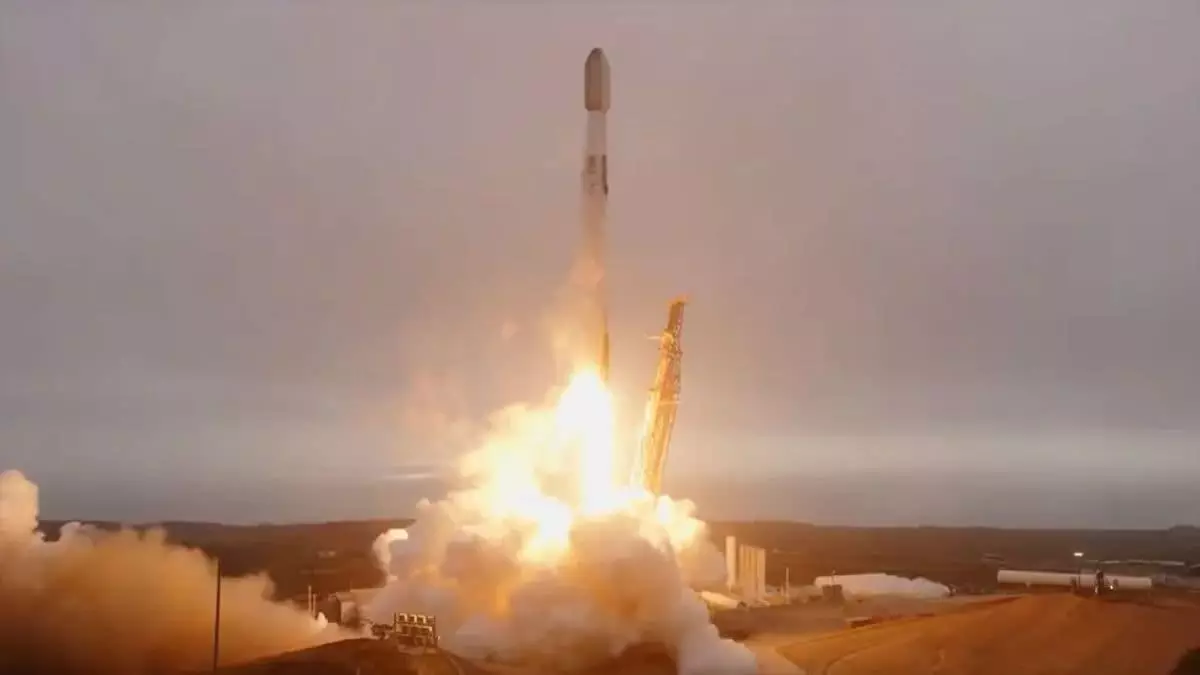In a dramatic demonstration of technological prowess, SpaceX has accomplished yet another feat with its latest launch of 26 Starlink satellites. This operation not only underscores SpaceX’s commitment to revolutionizing global internet access but also showcases the company’s mastery over rocket technology, specifically with the Falcon 9 rocket. As the world teeters between advancing digital equity and grappling with connectivity disparities, SpaceX’s relentless pursuit of satellite deployment positions them as not just a corporate entity, but as a pioneer of potential societal transformation.
More than Just Numbers: The Broader Implications
With over 7,600 satellites now active in orbit, one cannot overlook the implications of such a massive undertaking. SpaceX’s achievements are often boiled down to mere statistics; however, the real story lies in the promise of connectivity these satellites offer. They have the potential to bridge the digital divide—making high-speed internet accessible in underserved areas. This vision, while ambitious, is the very essence of liberal ideals: harnessing technology to uplift society and ensure that no one is left behind. There’s an insidious irony in questioning the motivations behind tech giants, yet here is a case where their success could equate to genuine societal benefit rather than just profit maximization.
Innovation in Launch Practices
The reuse of the Falcon 9 rocket’s first-stage booster, which completed its fifteenth flight, signifies more than cost-efficiency; it embodies a shift in aerospace thinking. Traditionally, rockets were viewed as expendable. By flipping that paradigm, SpaceX not only enhances accessibility but also advocates for sustainability in space exploration—a principle that resonates with a generation increasingly concerned about climate change and environmental stewardship. The company’s ability to perform 28 flights with one booster is a testament to innovation, yet it raises pressing questions about regulatory frameworks and the long-term sustainability of such practices.
The Broader Context of SpaceX’s Vision
While illuminating the practicality of satellite communication, we must also consider the implications of this growing ‘internet megaconstellation.’ Elon Musk’s vision extends into realms that can revolutionize industries, from in-flight connectivity to emergency response communications. However, the bourgeoisie and the political elite often engage in debates about regulation, space traffic management, and ethical concerns surrounding privacy and surveillance. As satellite deployments expand, so too does the power of those who command this infrastructure—a dynamic that demands robust oversight to ensure equitable access for all.
A New Era or a Promised Dystopia?
Yet, it would be naive to extend uncritical support solely based on innovation. The rush to blanket the Earth in satellite internet coverage poses uncharted challenges, particularly for nations struggling with digital sovereignty. While the liberal view advocates for global interaction, we must remain vigilant against corporate encroachment that could undermine local governance and cultural uniqueness. The confrontation between technological advancement and ethical stewardship remains poignant. Without checks and balances, what may appear as a compassionate effort at connectivity could easily devolve into another manifestation of corporate imperialism.
This blend of hope and caution encapsulates the complexity surrounding SpaceX’s endeavors. As they build a future of interconnectivity, the world must engage critically, ensuring these advancements become tools for liberation rather than instruments of control.

Leave a Reply